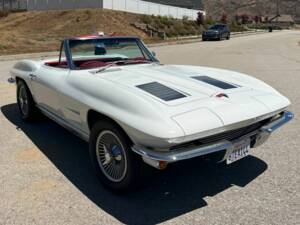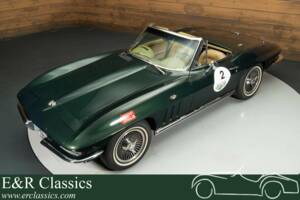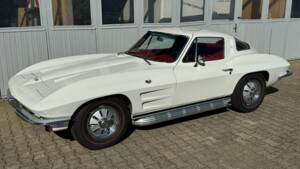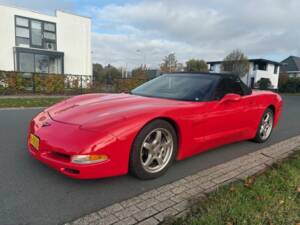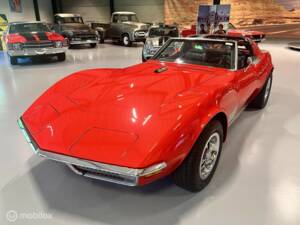Chevrolet Corvette classic cars for sale
The Chevrolet Corvette, produced since 1953, embodies American sports car engineering. Across eight generations, trends in performance, design, and technology have made every model a distinct chapter in automotive history. Whether early fibreglass-bodied C1s or the advanced mid-engined C8s, each Corvette brings unique character and appeal. Below, discover technical data, model specifics, known issues, and highlights from seventy years of Corvette production.
Search results
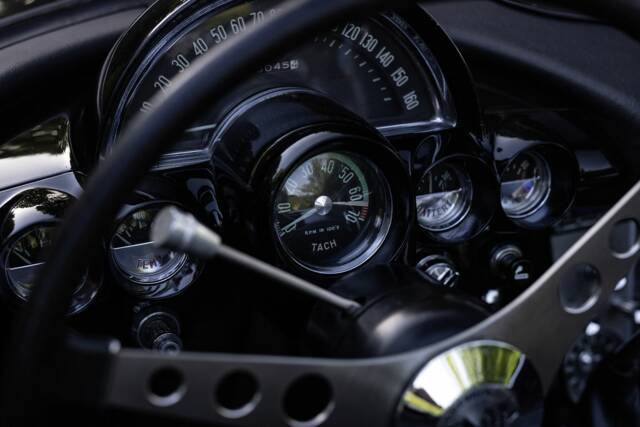
1961 | Chevrolet Corvette
Chevrolet Corvette C1 Cabriolet | 1961 | Route 66 Auctions - For sale by auction. Estimate 77500 EUR

1987 | Chevrolet Corvette Convertible
Chevrolet Corvette C4 Cabriolet | 1987 | Route 66 Auctions - For sale by auction. Estimate 7500 EUR

1963 | Chevrolet Corvette Sting Ray
Chevrolet Corvette C2 Cabriolet | 1963 | Route 66 Auctions - For sale by auction. Estimate 71500 EUR
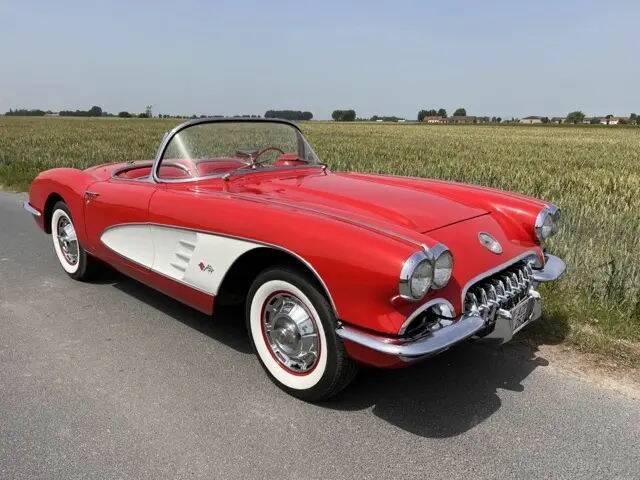
1960 | Chevrolet Corvette
Chevrolet Corvette C1 | 1960 | Route 66 Auctions - For sale by auction. Estimate 86500 EUR

1965 | Chevrolet Corvette Sting Ray Convertible
Corvette C2 Stingray Cabriolet | 1965
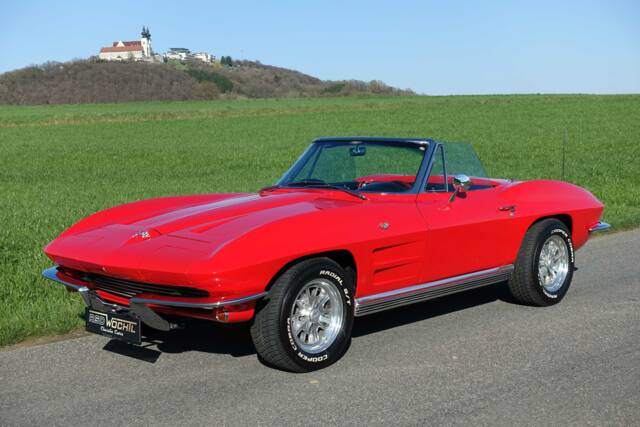
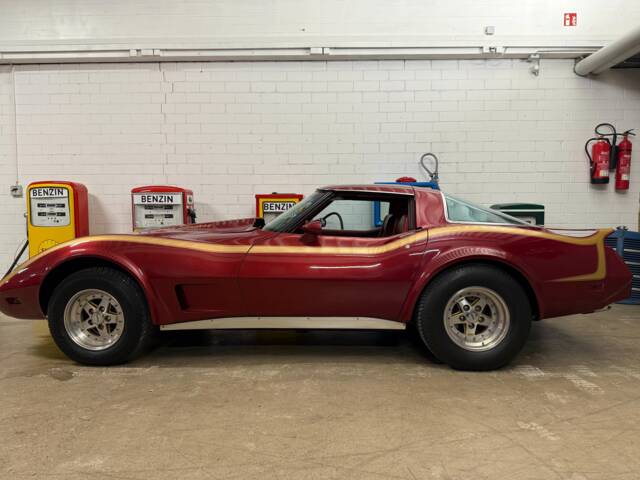
1979 | Chevrolet Corvette Sting Ray
Corvette C3 Targa

1964 | Chevrolet Corvette Sting Ray
She doesn't need you, but you feel great with her!

1991 | Chevrolet Corvette Convertible
Chevrolet Corvette C5 cabriolet | 1999 | Route 66 Auctions - For sale by auction. Estimate 10500 EUR

1958 | Chevrolet Corvette Barris Kustoms
1958 Corvette C1 '58
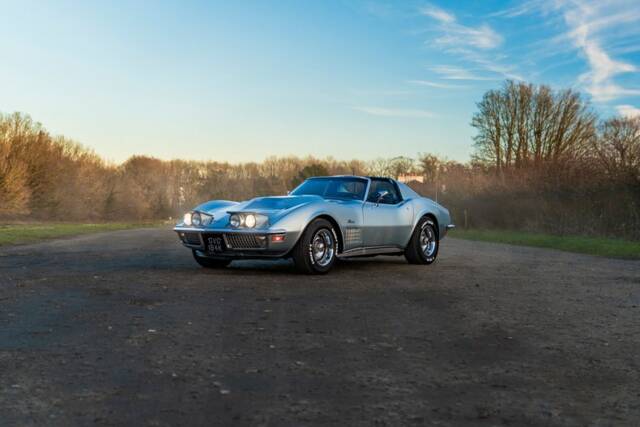
1972 | Chevrolet Corvette Stingray
1972 Chevrolet Corvette Stingray C3

1966 | Chevrolet Corvette Sting Ray
Corvette C2 Sting Ray Convertible
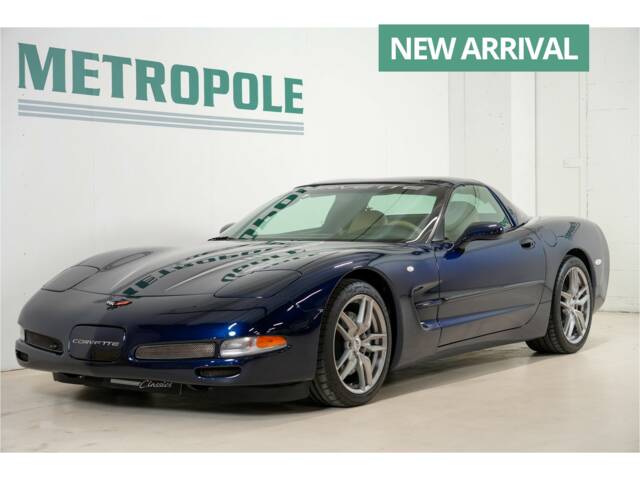
2001 | Chevrolet Corvette
Corvette C5, 2nd owner! M1086
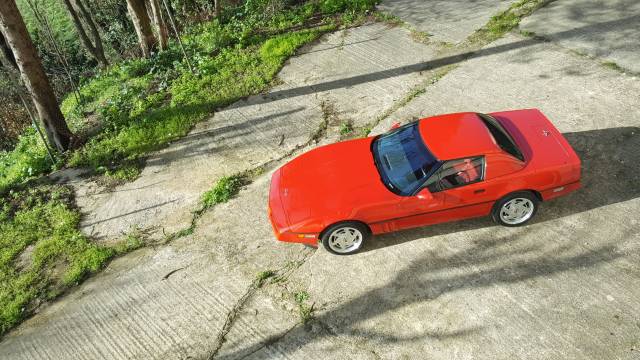

1971 | Chevrolet Corvette Stingray
Chevrolet CORVETTE C3 COUPE
History of the Chevrolet Corvette
The first Chevrolet Corvette was introduced in 1953, developed as an answer to the American market’s enthusiasm for European sports cars. Initially offered only as a roadster with a fibreglass-reinforced plastic body, production numbers in 1953 were low, with 300 units built and all painted white. The real breakthrough came in 1955, when Chevrolet installed the small-block V8, replacing the straight-six. The Corvette rapidly evolved: C1 (1953–1962) established the lightweight sports car formula, the C2 "Sting Ray" (1963–1967) added independent rear suspension, disc brakes and dramatic split-window styling, while the C3 (1968–1982) became a pop culture symbol with its "coke bottle" curves and the widest array of factory V8 options. The C4 (1984–1996) modernised the essence, offering digital instrumentation and advanced engines, including the Lotus-developed ZR-1. Successive generations continued integrating cutting-edge performance and materials, culminating in today’s C8 with mid-engined architecture. Over the years, the Corvette has remained a symbol of affordable American performance, surviving economic and regulatory headwinds and inspiring an international following.
Model history – Generations and evolution
The Corvette’s lineage is typically divided into eight generations, each marked by significant technical and design milestones:
- C1 (1953–1962): First US production car with fibreglass body; introduced V8 power from 1955, exclusive to convertibles.
- C2 (1963–1967): Debuted as "Sting Ray"; notable for split rear window (1963 coupé only), independent rear suspension, and optional fuel injection; both coupé and roadster available.
- C3 (1968–1982): Styled after the Mako Shark II concept; featured both coupé (with removable T-Top panels) and convertible body styles; powertrains ranged from small-block to big-block V8s (350–454 cu in), culminating in high-horsepower variants; from 1978, introduced notable special editions (Indy Pace Car, 25th Anniversary).
- C4 (1984–1996): Complete chassis and design overhaul; digital instrumentation; ZR-1 model with Lotus-designed dual overhead cam V8; offered practical improvements in handling and weight.
- C5 (1997–2004): Aluminium LS1 V8; transaxle layout for better weight distribution; Z06 variant focused on track performance.
- C6 (2005–2013): Compact, lighter, improved cockpit and electronics; Z06 and ZR1 pushed output well beyond 500 PS.
- C7 (2014–2019): Reintroduced Stingray branding; new engines, 8-speed automatic transmissions, upgraded interior.
- C8 (2020–present): Mid-engined platform, dual-clutch gearbox, advanced materials.
Each generation reflects contemporary trends in engineering and aesthetics, making every series unique in appeal and technical features.
Highlights and special features
Distinctive features throughout the Corvette’s history include lightweight construction (fibreglass or composite body panels), a wide range of V8 engine options, rear-wheel drive, and innovative equipment such as flip-up headlights (C2–C5), removable T-Top roofs (C3/C4), and advanced electronics in later models. Factory-fitted interiors often feature leather seats, air conditioning, and high-grade audio, with a rich palette of vibrant colours and graphics reserved for limited runs. The 1963 ‘split-window’ coupé, big-block V8 variants (especially 1967 427 L88, 1970 LS5/LS6), and ZR-1 are particularly sought after.
Statistical analysis of Classic Trader listings shows that C3 Serie II Corvettes dominate supply and demand, with 36.8% of adverts and 32.3% of listing views, followed closely by C1 and C2 models (over 19% and 17% share of supply). This reflects enduring enthusiasm for third-generation Corvettes and earlier models, both among sellers and prospective buyers.
Technical Data
Special Editions and Collectible Models
Key special editions include:
- 25th Anniversary (1978): Two-tone silver paint, special badging.
- 1978 Indianapolis 500 Pace Car Replica: Black and silver paint, official Indy graphics.
- Collector Edition models: Notably in 1982 (C3), 1993 (C4 40th Anniversary), often with exclusive paint and trim.
- C4 ZR-1 (1990–1995): Lotus-designed DOHC LT5 V8, performance-focused, limited numbers.
- C5 Z06, C6 Z06/ZR1: High-performance packages with lightweight construction and elevated power outputs.
- 1963 Split-Window coupé, 1967 427 L88 and 1970 LS5/LS6 are especially valued for their rarity, performance pedigree, and motorsport links.
Weak Spots and Common Issues
Every Corvette generation carries specific vulnerabilities:
- General: Electrical system malfunctions, especially Body Control Module (BCM) and steering lock errors; wheel cracks and worn suspension lead to vibrations; cooling system issues (radiator/thermostat failure); fibreglass body damage is expensive to repair; door/window seal wear can cause leaks; tensioners/pulleys prone to wear.
- C1–C3 (1953–1982): Notable for frame rust (esp. near rear axle), vacuum-related faults in lighting/wiper systems, T-Top/cabrio roof leaks, pop-up headlight failure.
- C4 (1984–1996): Timing chain/fuel injector issues, oil/gearbox leaks, recurring electronics problems, vulnerable pop-up headlight mechanisms, ZR-1 (check LT5 condition).
- C5 (1997–2004): Frame distortion if improperly lifted, body damage, bearing leaks, worn suspension bushings, headlamp gears, ground points and cable connections.
- C6/C7 (2005–2019): Aluminium/magnesium panels costly to repair after collision, critical to check engine timing and cylinder deactivation on LT1, transmission wear in manual versions, persistent water ingress risks on removable-roof models.
Close scrutiny of drivetrain, chassis, and originality is advised, especially with older or extensively modified cars. For collector cars, matching numbers and documented provenance are crucial.
Engine, Performance and Handling
Performance traits on classic Corvettes depend heavily on engine and generation. Early C1s (I6 engines) were modest, but V8s (from 1955) brought transformative power.
C2 and C3 introduced high-output small- and big-block V8s with output up to 435 hp (7.0L), capable of 0–100 km/h in around 5–6 seconds depending on model.
C4 brought improved chassis and suspension, responsive steering, and for the ZR-1, a modern DOHC V8. C5 introduced a rear transaxle for near 50:50 weight balance, further improved by the C6 and high-performance Z06/ZR1 versions. The latest C8, with mid-engine layout, achieves modern supercar dynamics. All models maintain rear-wheel drive and often manual transmission for driver engagement.
Popular models include:
- 1963 C2 Split-Window coupé: Coveted for its visual drama and lightweight handling.
- 1970 C3 454 LS5/LS6: Known for vast low-end torque.
- C4 ZR-1: Advanced handling for its era, 375+ hp.
- C5 Z06, C6 Z06/ZR1: Track-oriented chassis and significant power, contrasting with plush Grand Sport or convertible models. - C3 Serie II (36.8% of supply, 32.3% demand)
- C1 (19.4% supply, 28.7% demand)
- C2 (17.6% supply, 25.7% demand)
- C4 (12.7% supply, 5.5% demand)
- Lower demand and supply for C5, C6, C7, C8 among classic buyers.
Design, interior and equipment
Corvette design constantly evolved from the conservative C1 to the aggressively sculpted lines of C3, the sharply angular C4, and the aerodynamic C5–C8. Signature elements include long bonnets, short rear decks, quad rear lamps (from C2), and concealed headlamps (C2–C5). Early interiors used classic American chrome and vinyl, with later generations adding leather seats, improved dash layouts, and increased digital technology.
Notable designers: Harley Earl (C1), Bill Mitchell (C2/C3). Special colours such as Daytona Yellow, Cortez Silver, and pace car graphics add flair. Accessories and options across generations range from manual and powered convertibles, power windows/seats, air conditioning, to sidepipes, Rallye wheels, and later, Bose/Delco sound systems.
Customisation is a hallmark: buyers specified everything from metallic paints to mechanical upgrades, resulting in a broad spectrum of factory builds and one-offs. T-Tops (C3/C4), Targa roofs, convertible and Z06/ZR1 aerodynamic packages highlight the diverse configurations.
Additional aspects
The Corvette’s enduring popularity sustains extensive parts and specialist support—most parts, from trim to drivetrain, are obtainable even for early models. Numerous clubs and forums offer peer expertise. Proper documentation (build sheet, Protect-O-Plate, owner's handbook) is valued among collectors. Motorsport participation, especially with big-block and ZR-1 models, adds heritage appeal.
Summary
The Chevrolet Corvette encapsulates seventy years of continuous innovation and American performance culture. Each generation, from the C1’s pioneering fibreglass body through to today’s C8, stands as a unique expression of engineering and design. Core buying considerations include careful assessment of mechanical and body condition, electrical integrity, and authenticity—factors central to value and reliability. With a vast classic community, ready parts support, and exceptional technical diversity, the Corvette remains an aspirational choice for enthusiasts seeking a distinct classic driving experience.


